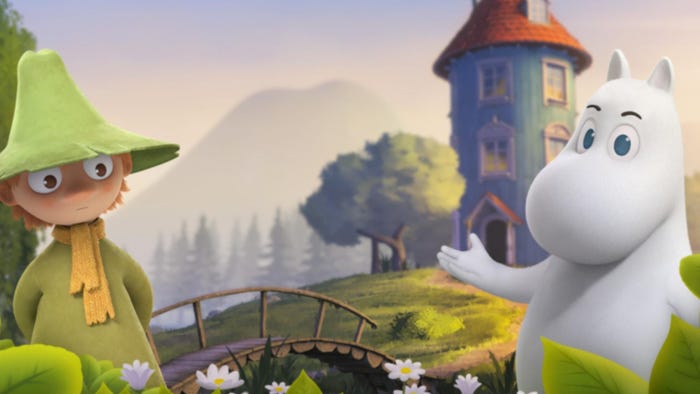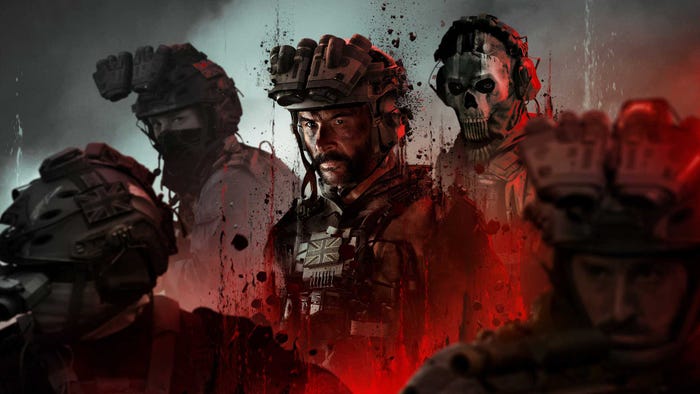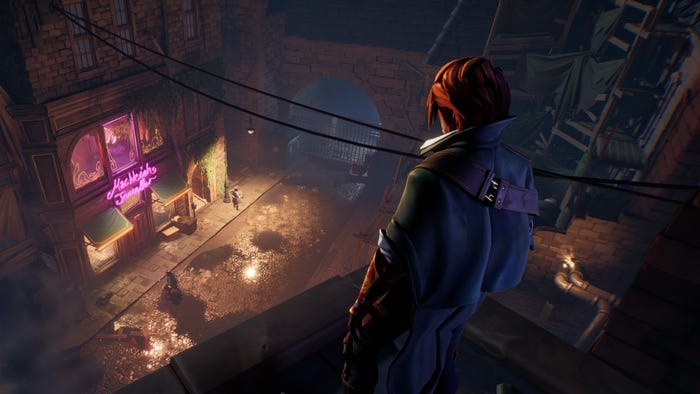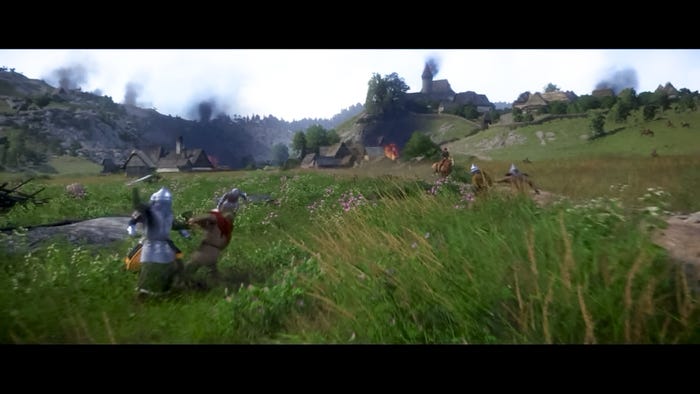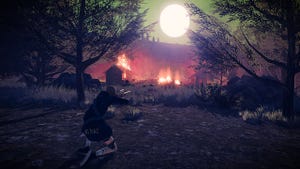As part of Gamasutra's Road to the IGF series we interview Stoic's Alex Thomas about The Banner Saga, a beautifully hand-painted PC strategy game set in a bleak world of Nordic fantasy.

Stoic blew past its funding goal for The Banner Saga within two days of launching the game's Kickstarter campaign in 2012, due in large part to the game's beautiful hand-illustrated artwork and the promise of classic turn-based tactical combat in a harsh, unforgiving fantasy world. Backers seemed unperturbed by the fact that it was indie studio Stoic's inaugural offering, presumably at least in part because the studio was founded by a trio of ex-BioWare employees. Like many Kickstarter success stories, The Banner Saga suffered developmental delays as Stoic rapidly re-evaluated the scope of the game in light of their unexpected crowdfunding windfall. The game was ultimately released in two pieces over two years, earning a nomination for the 2014 IGF Excellence in Visual Design award alongside a pair of honorable mentions for its design and soundtrack, composed by Austin Wintory. Continuing our Road to the IGF series of interviews with nominees, Gamasutra speaks to Stoic co-founder and artist Alex Thomas about how the studio's inaugural game finally came together and why developers -- even Kickstarter-funded indie developers -- shouldn't be too quick to blame publishers for the industry's ills.
What's your background in making games?
All three of the founders of Stoic worked together at BioWare, and have each had about a decade of experience in the industry. Personally, I was lucky enough to get an entry-level artist position right out of college, back when there were no game design courses. I taught myself to use 3DS Max and badgered a company called Wolfpack into giving me an interview. It took a whole year after that before I was good enough that they hired me. Since then I've been working at a variety of different studios across a range of different departments.
So what development tools did you use to build The Banner Saga?
To prototype, before we started developing any code, we would actually use a chess board and improvised pieces to design the combat system. Once we started working on the game proper, we actually built a lightweight but fairly robust engine that we're calling Yggdrasil, like the Nordic world tree. It has branches for each of the systems involved in creating the game. The art is hand-painted in Photoshop, and all the animation is done in Flash and then sprite-sheeted and imported into the engine, which is definitely our best option since all the animation is rotoscoped and each frame is drawn by hand.
How much time have you spent working on the game?
At the time of launch, we'd been working on The Banner Saga for almost exactly two years. In addition to the fairly long single-player campaign, we released a free multiplayer game and a full 70-minute original soundtrack. It's been a lot of long hours.
Where did the concept for The Banner Saga come from?
A turn-based strategy game is something we've always wanted to work on, since growing up as kids. We had an interesting idea for a unique combat mechanic, and a good outline for a story. Early on we realized we wanted something a little different from the usual medieval fantasy of knights, elves and dragons, and thought a viking setting would fit well within the context of the story. At the time, this sort of thing wasn't all that common -- it was before Skyrim and the History Channel Vikings show. Seems like the setting has become really popular. That said, the game we ended up with is so much better than the game we set out to make that we're constantly amazed at what we were able to crank out with such a small team.
Speaking of what you set out to make, how does The Banner Saga released in 2014 differ from The Banner Saga you pitched on Kickstarter in 2012?
I'd have to say there's almost nothing left of the original concept, especially in terms of scope and design, and I mean that in a good way. The story has gone through at least five major revisions, while the combat and usability has had major changes over a dozen times. Travel gameplay has changed significantly. I guess the important thing is that design is an iterative process. If you sit down and write a design doc for the game and think you're done, you're going to have a crappy game. It's a good start, then you implement the systems, play them, and change them over and over until they all work together harmoniously. In that regard, the most valuable thing Kickstarter allowed us to do was [work through] a ton of iterations, instead of having to settle on the first thing we thought of. Specifically, I'd say we went from a game that would have had maybe 8-10 different characters, been 5-6 hours long and would have been more about your caravan in general to a game with 25+ characters, 12+ hours long and a hell of a lot of character development and branching decisions.
Have you played any of the other IGF finalists? Any games you've particularly enjoyed?
Absolutely! And the great thing is that we actually know a lot of developers personally. It's a growing but fairly close-knit community. One of my favorite game makers is still Blendo [Games], who are releasing Quadrilateral Cowboy soon. Gorogoa is absolutely stunning in its presentation, and I've played a fair amount of Don't Starve over the last year. Still though, my favorite has to be The Yawhg and Save the Date. I'm a sucker for Emily Carroll's art and well written stories.
How do you feel about the current state of the indie scene?
In my opinion, the indie scene has never been better. And please, keep in mind this is all my personal opinion and hell, I could be way wrong. The games industry really has an interesting relationship with publishers. And yes, a publisher can take things too far trying to maximize their short-term profits, burning out developers and players with creatively stifled sequels, etc. But in the bigger picture, publishers aren't really the problem. They're not "forcing" anything on the public -- quite to the contrary they spend all their time, money and effort trying to figure out exactly what the public wants. That's no easy task, but the unfortunate truth is that the more successful a publisher is the better they are at giving people what they want. It's the same with the film industry. Tired of seeing the same dumbed-down, repetitive drek? You have to stop buying it, and convince everyone else to stop too. It's the democratization of entertainment, and in most cases the majority wins. In my opinion what's great about this point in time is that indie devs can make a damn good living for themselves with all the creative freedom in the world, and AAA publishers can look at those successes and make something like it with a multi-million dollar budget. I can't say whether Everquest Next is going to be a huge success but I'm really hoping that it turns out great. That game would have never happened without Minecraft. Kickstarter is an extraordinary tool for making bigger and better original games. In my opinion the only thing that's going to hold back Kickstarter is the backers themselves, who moan and threaten to sue every project that doesn't do exactly what they expected, or projects that don't pan out. That's going to happen, it's part of the risk. It happens to publishers all the time. The value, in my opinion, isn't in getting "that one game" you wanted, but elevating the entire games industry. You gotta have a long view of the whole process.
About the Author(s)
You May Also Like


